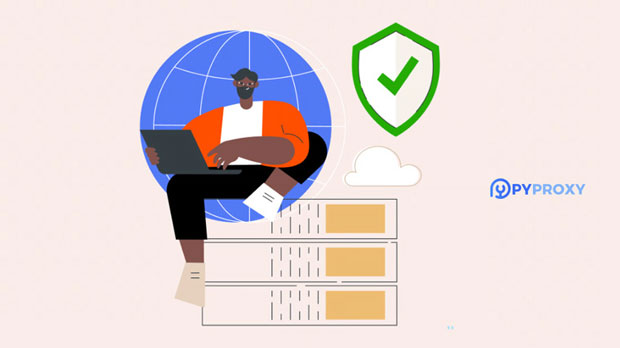How to use IP port proxies for traffic masquerading and hiding real IPs?
In today’s digital age, privacy and security are paramount, especially when it comes to online activities. One of the most effective methods to secure your internet presence is by using IP port proxies. These tools help mask your real IP address by routing your traffic through another server, making it appear as though the request originates from a different location. This technique is often employed for privacy protection, bypassing geographic restrictions, and safeguarding against tracking. In this article, we will explore how IP port proxies function and how they can be used effectively for traffic obfuscation, ultimately hiding your real IP address from third-party surveillance. What Are IP Port Proxies?An IP port proxy is a server that acts as an intermediary between your device and the internet. When using a proxy, your internet traffic is routed through this server, and the server’s IP address replaces your device’s IP address in all outgoing communications. The proxy server receives requests on behalf of your device, sends them to the internet, and returns the response to you. By doing this, your real IP address is hidden, ensuring that anyone who attempts to track your online activities sees only the proxy server's IP.There are different types of ip proxies, such as HTTP, HTTPS, SOCKS5, and others, each suitable for specific tasks and providing varying levels of anonymity and security. Some proxies only hide the IP address, while others also encrypt the traffic, further improving privacy.How IP Port Proxies Help with Traffic ObfuscationTraffic obfuscation refers to the process of making online traffic less recognizable or traceable. IP port proxies play a crucial role in this process by masking the source of the traffic. When you use a proxy, it becomes challenging for websites, advertisers, and other entities to track the origin of the requests. This is especially valuable for users who wish to avoid targeted advertising or surveillance, as well as for those in regions where censorship is prevalent.Proxies also make it difficult to determine your physical location. By routing your traffic through a server located in another country or city, websites will see the proxy's location as the origin, rather than your actual one. This technique is often used by people trying to bypass geo-restricted content, such as accessing media services unavailable in certain regions.Advantages of Using IP Port ProxiesUsing an IP port proxy comes with several significant advantages:1. Privacy Protection: By masking your IP address, proxies offer a basic level of privacy. Since websites will only see the proxy's IP address, they cannot directly track your real location or identity. 2. Bypassing Geo-Restrictions: Many websites and services restrict access based on geographical location. With an ip proxy, you can use a server in a different location to bypass these restrictions and access content that would otherwise be unavailable in your country. 3. Anonymity: Proxies provide a layer of anonymity for individuals who want to remain undetected while browsing. This is particularly useful for journalists, activists, or individuals in countries with high surveillance. 4. Preventing Tracking: Proxies help prevent websites from tracking your online activities, which can be useful for users concerned about being followed or having their data collected by advertisers and other third parties.5. Enhanced Security: Some proxies, especially HTTPS and socks5 proxies, offer encrypted traffic, ensuring that sensitive data is protected from hackers or other malicious actors when sent over the internet.Setting Up and Configuring IP Port ProxiesSetting up an IP port proxy requires selecting a proxy provider and configuring it on your device. Below are the general steps to get started:1. Choose a Proxy Provider: Research and select a reputable provider that offers the type of proxy you need (e.g., HTTP, HTTPS, SOCKS5). Ensure they offer adequate privacy and security features. 2. Obtain Proxy Details: Once you sign up for a proxy service, you will receive proxy details, including an IP address, port number, and possibly authentication credentials. 3. Configure Your Device or Browser: After obtaining the proxy details, configure your device’s network settings or browser settings to use the proxy. This usually involves entering the IP address and port into the appropriate fields in the network or proxy settings menu.4. Test the Proxy: Once set up, test the proxy to ensure it is working properly. You can check your IP address through websites that show your public IP to verify that it has been masked by the proxy.Types of IP Port Proxies and Their ApplicationsDifferent types of IP port proxies are suited for various use cases. Let’s explore some of the most common types and their applications:1. HTTP Proxies: These are used primarily for web browsing. They can handle basic web traffic and are often employed for tasks such as hiding browsing activity and bypassing geo-blocked websites. However, they do not encrypt traffic, so they are not ideal for sensitive activities.2. HTTPS Proxies: Similar to HTTP proxies, HTTPS proxies add an extra layer of security by encrypting the data traffic. This makes them ideal for tasks where sensitive data is involved, such as online banking or shopping.3. SOCKS5 Proxies: SOCKS5 is a more versatile proxy that can handle a wider range of internet traffic, including P2P activities like torrenting. It also supports encryption, which adds a layer of security to your traffic.4. residential proxies: These proxies use IP addresses provided by ISPs, making them more difficult to detect as proxies. They are often used for activities that require high anonymity, such as market research or social media management.5. Datacenter Proxies: These proxies are hosted on data centers and tend to be faster and cheaper but are more likely to be detected as proxies. They are typically used for high-volume, low-risk tasks, such as web scraping.Challenges and Considerations When Using IP Port ProxiesWhile IP port proxies are a useful tool for privacy and security, they come with their own set of challenges:1. Proxy Detection: Some websites actively detect and block traffic coming from known proxies. This can limit the effectiveness of proxies, especially for tasks that require a high level of anonymity.2. Reduced Speed: Since your traffic is being routed through an intermediary server, proxies can sometimes slow down your internet connection. The speed reduction depends on factors such as the proxy provider’s server load and your geographic location relative to the proxy server.3. Reliability: Not all proxy services are reliable. Free proxies, in particular, may be slow, unreliable, or even compromised, putting your privacy at risk. It's important to choose a reputable provider.4. Legal and Ethical Considerations: In some cases, using proxies to bypass restrictions or mask your identity may violate terms of service or local laws. Always consider the legal implications of using proxies in your country or for specific purposes.ConclusionIP port proxies are a powerful tool for online privacy, security, and traffic obfuscation. By routing your internet traffic through a proxy server, you can hide your real IP address, bypass geo-restrictions, and protect your identity from tracking. However, it is important to choose the right type of proxy, set it up correctly, and consider the potential challenges, such as reduced speed and detection risks. When used correctly, IP port proxies can be an essential part of maintaining privacy in the digital world.
2025-01-30
























































